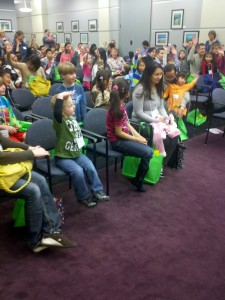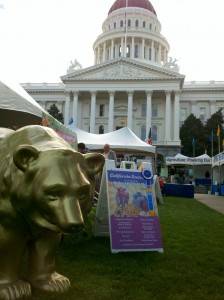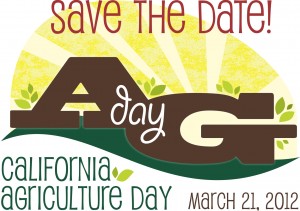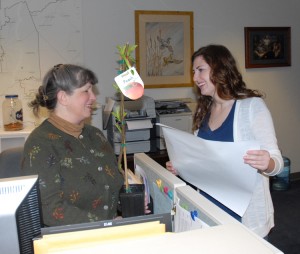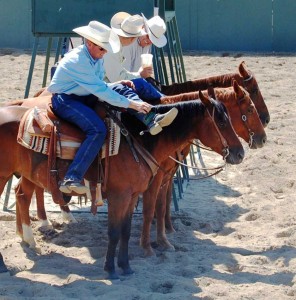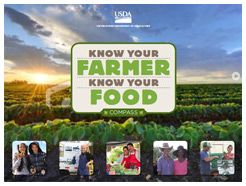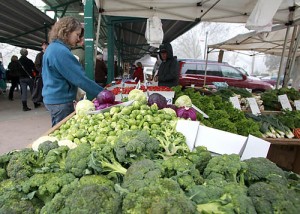http://www.cdfa.ca.gov/egov/Press_Releases/Press_Release.asp?PRnum=12-007
WHAT: Ag Day 2012 is the California agricultural community’s annual opportunity to give legislators, Capitol staffers and the public a chance to see what’s new down on the farm. California’s farmers and ranchers provide food, fiber, flowers and more for all of the Golden State’s citizens and many more around the world. Award-winning farmers will be honored, as will several young “prospective farmers” who have penned agriculture-themed stories for a writing contest. Attendees will collect free samples, meet California Rodeo queens, view presentations on the latest in farming sustainability and agricultural education, and get an up-close look at a variety of farm animals. The next generation of farmers gets in on the act, too, with Kings County Junior Fair Board members volunteering to greet attendees and assist with the event.
The California Department of Food and Agriculture (CDFA) partners with California Women for Agriculture and the California Foundation for Agriculture in The Classroom to host this annual celebration. This year’s theme, Know Your California Farmer, highlights the contributions of farmers, ranchers from many of California’s diverse counties and growing regions.
During a stage presentation at noon, the agricultural community will honor the 2011 Leopold Conservation Award winner Tim Koopmann, a Bay Area rancher. Given in honor of renowned conservationist Aldo Leopold, the Leopold Conservation Award, which consists of $10,000 and a Leopold crystal, recognizes extraordinary achievement in voluntary conservation. In his influential book, A Sand County Almanac (1949), Leopold called for an ethical relationship between people and the land they own and manage, which he deemed to be “an evolutionary possibility and an ecological necessity.” Applications for the 2012 award are being accepted until July 15, 2012. For more information, please visit: www.leopoldconservationaward.org
WHEN: Wednesday, March 21, 2012, rain or shine
Open to Legislators and staff 10:30 a.m. to 11:30 a.m.
Open to the public 11:30 a.m. to 1:30 p.m.
PRESS CONFERENCE: “Eat Local, Buy California Grown”
Begins at 11:30 a.m., featuring:
CDFA Secretary Karen Ross
Assembly Speaker Pro Tempore Fiona Ma (San Francisco and San Mateo Counties)
Senate Agriculture Committee Chairman Anthony Cannella (Ceres)
Assembly Member Cathleen Galgiani (Stockton)
AG DAY STAGE PRESENTATION
Begins at noon, featuring emcee Michael Marks “Your Produce Man”and:
CDFA Secretary Karen Ross
California Women for Agriculture President Karri Hammerstrom
California Foundation for Agriculture In The Classroom Executive Director Judy Culbertson
2011 Leopold Conservation Award Winner Tim Koopman, Bay Area rancher
Miss Rodeo California Mackenzie Cayford and Miss California Rodeo Salinas Kendra Brennan
Student winners of the 2012 “Imagine This” Story Writing Contest, conducted by the California
Foundation for Agriculture In the Classroom
WHERE: California State Capitol grounds, west steps
WHY: Ag Day is an annual event designed to recognize California’s agricultural community by showcasing the numerous commodities that are produced in our state—and the farmers and ranchers who bring them to our tables. It is also a day for the agricultural community to show its appreciation of Californians by bringing together state legislators, government leaders and the public for a half day of agricultural education and treats.



